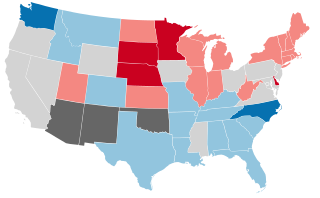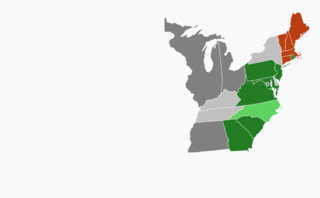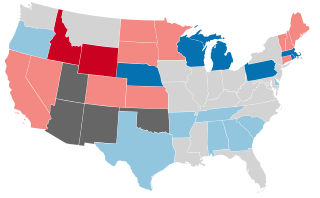
United States gubernatorial elections were held in 1900, in 34 states, concurrent with the House, Senate elections and presidential election, on November 6, 1900.

United States gubernatorial elections were held in 1899, in seven states.

United States gubernatorial elections were held in 1802, in 12 states, concurrent with the House and Senate elections.

United States gubernatorial elections were held in 1803, in 12 states.

United States gubernatorial elections were held in 1887, in six states.

United States gubernatorial elections were held in 1804, in 13 states, concurrent with the House, Senate elections and presidential election.

United States gubernatorial elections were held in 1898, in 28 states, concurrent with the House and Senate elections, on November 8, 1898.

United States gubernatorial elections were held in 1893, in five states.

United States gubernatorial elections were held in 1895, in nine states.

United States gubernatorial elections were held in 1810, in 13 states, concurrent with the House and Senate elections.

The 1886 Rhode Island gubernatorial election was held on April 7, 1886. Incumbent Republican George P. Wetmore defeated Democratic nominee Amasa Sprague with 53.36% of the vote.

United States gubernatorial elections were held in 1896, in 32 states, concurrent with the House, Senate elections and presidential election, on November 3, 1896.

United States gubernatorial elections were held in 1894, in 28 states, concurrent with the House and Senate elections, on November 6, 1894.

United States gubernatorial elections were held in 1892, in 32 states, concurrent with the House, Senate elections and presidential election, on November 8, 1892.

United States gubernatorial elections were held in 1890, in 27 states, concurrent with the House and Senate elections, on November 4, 1890.

United States gubernatorial elections were held in 1889, in eleven states.

United States gubernatorial elections were held in 1888, in 26 states, concurrent with the House, Senate elections and presidential election, on November 6, 1888.

United States gubernatorial elections were held in 1885, in seven states.

The 1848 Rhode Island gubernatorial election was held on April 5, 1848.

The 1859 Rhode Island gubernatorial election was held on April 6, 1859.




















